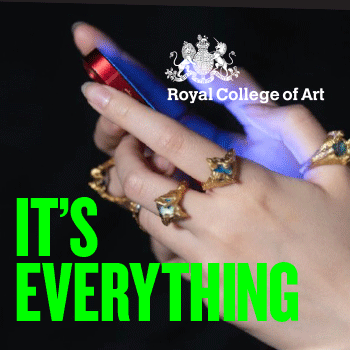The amount of 'critically endangered' crafts on the list has almost doubled
HCA's Red List of Endangered Crafts Grows with 37 New Additions
Reading Time:
1 min {{readingTime}} mins
For the 2019 edition of the Heritage Craft Association's Red List of Endangered Crafts, 212 crafts were assessed to identify those which are at greatest risk of disappearing. Of the 212 crafts featured in the research, four have been classified as extinct, 36 as critically endangered, 70 as endangered and 102 as currently viable.
Sixteen new crafts have been added to the ‘critically endangered’ category of the Red List, meaning that they are at serious risk of dying out in the next generation, including withy crab pot making, millwrighting and commercial handmade paper making. They join 20 other critically endangered crafts, including five (bell founding, flute making, scissor making, tinsmithing and watch making) that have been reclassified as being at a higher level of risk than when the research was first published in 2017.
It’s not all bad news, however, as the craft of sieve and riddle making, which was listed as extinct in 2017, has now been revived by two new makers devoted to bringing it back, both of whom are now beginning commercial production. In addition, the organisation behind the research, the Heritage Crafts Association, has, with funding from The Dulverton Trust, employed an Endangered Crafts Officer to look for practical ways to safeguard these crafts skills, and has set up an Endangered Crafts Fund to provide the means to do so.
What is a Heritage Craft?
For the purposes of this research, a heritage craft is defined as “a practice which employs manual dexterity and skill and an understanding of traditional materials, design and techniques, and which has been practised for two or more successive generations.” The research focuses on craft practices which are taking place in the UK today, including crafts which have originated elsewhere.
NEW AND RECLASSIFIED ENTRIES TO THE LIST
CRITICALLY ENDANGERED
- Basketwork furniture making
- Bell founding RECLASSIFIED
- Damask weaving
- Fair Isle straw backed chair making
- Flute making RECLASSIFIED
- Hat plaiting
- Kishie basket making
- Maille making
- Millwrighting
- Orrery making
- Paper making (commercial)
- Pottery (industrial)
- Reverse glass sign painting
- Scissor making RECLASSIFIED
- Shinty caman making
- Sieve and riddle making RECLASSIFIED
- Spinning wheel making
- Tinsmithing RECLASSIFIED
- Wainwrighting
- Watch face enamelling
- Watchmaking RECLASSIFIED
- Withy pot making
ENDANGERED
- Bee skep making
- Carpet and rug tufting
- Coach building RECLASSIFIED
- Coracle making RECLASSIFIED
- Corn dolly making
- Cutlery making and tableware
- Falconry furniture making
- Founding (ferrous metals) RECLASSIFIED
- Free reed instrument making
- Gansey knitting
- Glove making RECLASSIFIED
- Hat block making RECLASSIFIED
- Keyboard instrument making RECLASSIFIED
- Letterpress
- Marbling RECLASSIFIED
- Nalbinding
- Neon bending
- Northumbrian pipe making
- Rush matting
- Shoe and boot last and tree making
- Side saddlery
- Smocking
- Straw working
- Surgical instrument making
- Umbrella making
- Vegetable tanning RECLASSIFIED
- Wheelwrighting RECLASSIFIED
- Whip making
- Wooden pipe making
CURRENTLY VIABLE
- Batik
- Billiard, snooker and pool cue making
- Braiding RECLASSIFIED
- Coach trimming
- Enamelling
- French polishing
- Model engineering
- Mosaic
- Origami
- Quilling
- Steel pan making
- Swordsmithing
- Tatting
- Taxidermy
- Wig making
EXTINCT
- Mould and deckle making
Daniel Carpenter, who led the research on behalf of the Heritage Crafts Association, said:
“The Red List of Endangered Crafts is vital in drawing our attention to parts of our shared cultural heritage we are at greatest risk of losing. What we as a society decide to do with that knowledge is up to us, but at the Heritage Crafts Association we believe that the country’s skills and practices can be just as valuable as its historic artefacts and monuments… perhaps even
more so as they may offer opportunities for future generations to create their own sustainable and fulfilling livelihoods in ways we cannot yet imagine. If we allow these crafts to disappear then we seriously diminish these opportunities.”
Whilst the UK has been a world-leader in the preservation of tangible heritage (museum collections, buildings and monuments), it has fallen behind the rest of the world when it comes to the safeguarding of intangible heritage (knowledge, skills and practices). It is among only 15 of 193 UNESCO members that has not yet ratified the 2003 Convention on the Safeguarding of Intangible Heritage, and government responsibility for heritage crafts falls in the gap between agencies set up to support arts and heritage.
Julie Crawshaw, Director of the Heritage Crafts Association, said:
“In an age of hyper-digitisation these skills can offer a viable alternative workplace and a lifestyle that can bring a sense of accomplishment and increased wellbeing. As examples of tacit knowledge that cannot easily be passed on in written form; they survive only through practice and the transmission of skill from one person to another. The Heritage Crafts Association, which is celebrating its tenth year in 2019, is dedicated to safeguarding heritage crafts skills for the benefit of everyone.”
All 212 entries featured in the Red List of Endangered Crafts 2019 edition are available to view online at http://redlist.heritagecrafts.org.uk.
Author:
Published:











